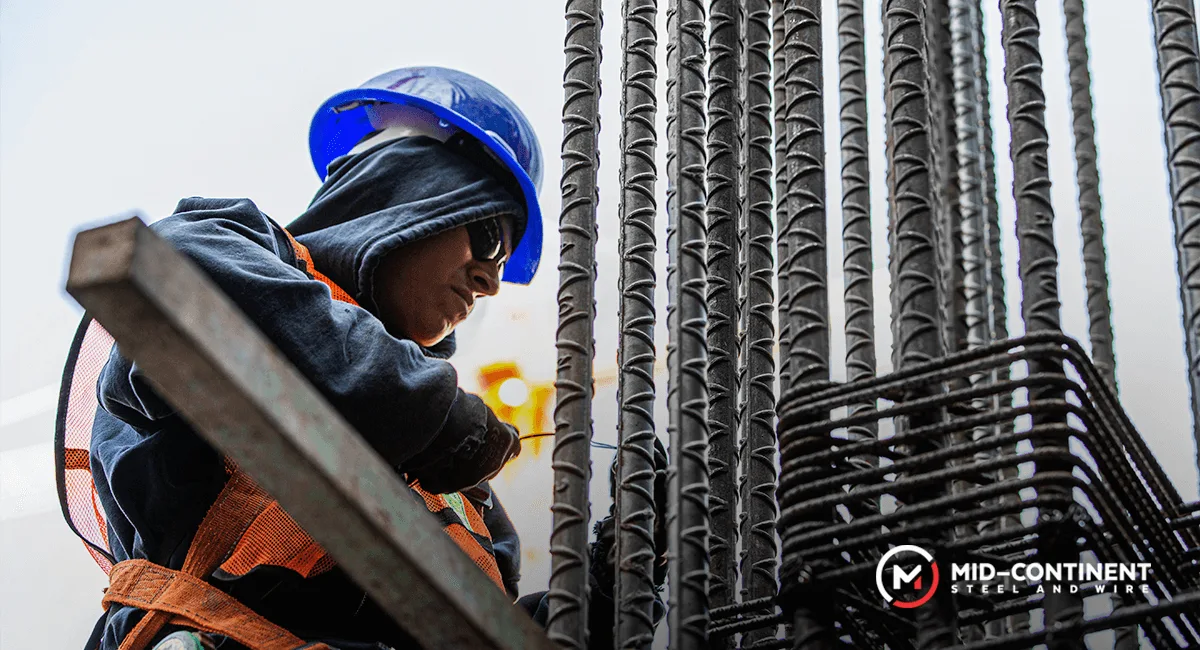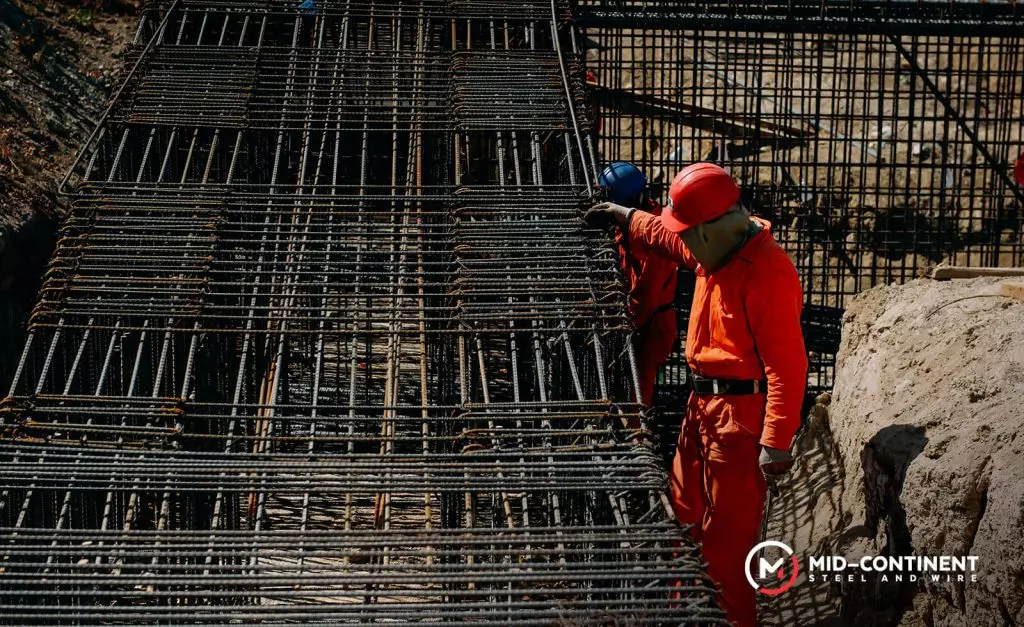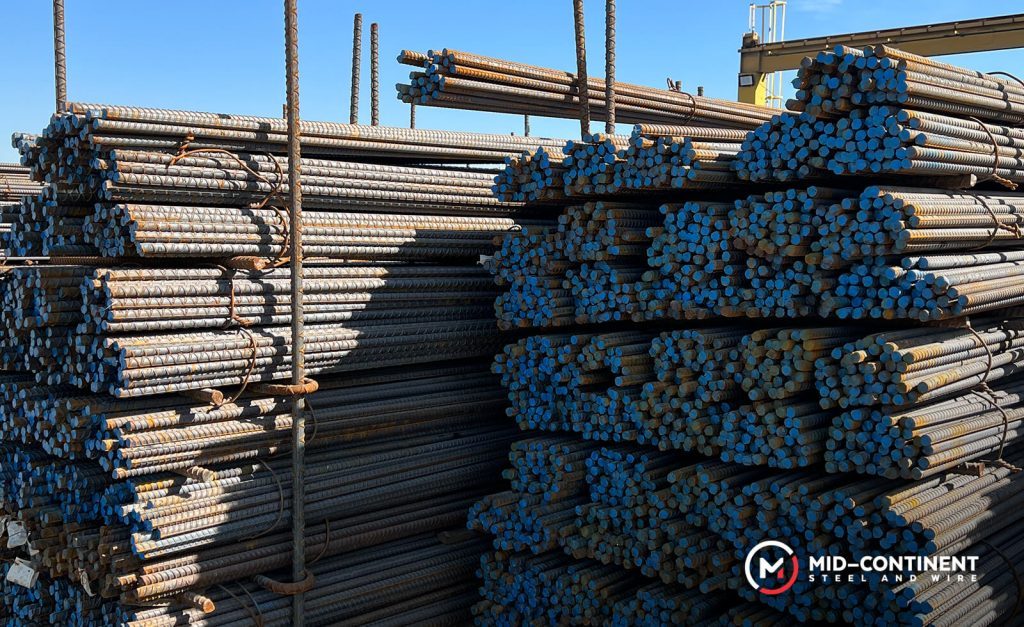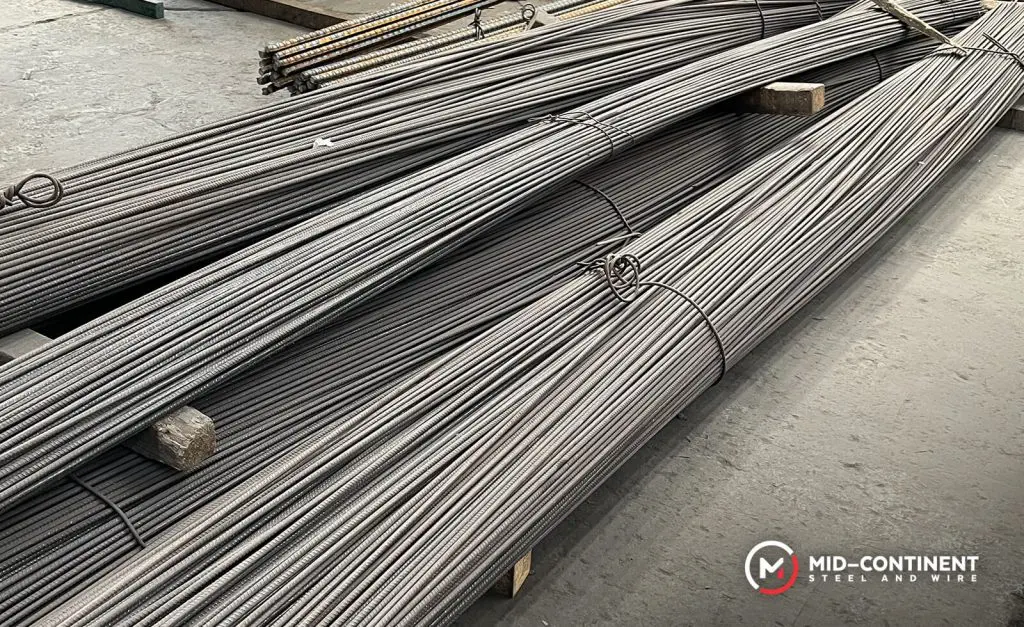
Rebar, short for reinforcing bar, is an essential component in reinforced concrete structures. It provides additional strength to the concrete by helping to resist tensile forces, which concrete is relatively weak at handling on its own. Let’s break down some key points about rebar used in concrete.
This reinforcing steel material is widely used to increase the durability of any type of concrete structure. Steel reinforcement prevents structural problems, with variations in coatings and processes, such as galvanized rebar to protect from corrosion. Steel bar reinforcing is essential to prevent long term issues.

Types of Rebar surfaces
- Deformed Rebar: This type of rebar has surface deformations to improve the bond between the steel and the concrete. The deformations may be in the form of ribs or patterns to enhance the mechanical anchoring of the bar in the concrete.
- Smooth or Mild Steel Rebar: This type has a smooth surface and is less commonly used in modern construction. Deformed rebar is preferred in most applications because of its superior bonding characteristics.

Rebar characteristics
- Material: While traditional carbon steel rebar is susceptible to corrosion in certain environments, stainless steel rebar offers enhanced corrosion resistance, making it suitable for structures exposed to harsh conditions or corrosive elements.
- Grade: Rebar comes in different grades, such as Grade 40, Grade 60, and so on. The grade indicates the minimum yield strength of the steel. For example, Grade 60 rebar has a yield strength of 60,000 pounds per square inch (psi). The appropriate grade is selected based on the structural requirements of the project.
- Size: Rebar comes in various diameters, typically ranging from #3 to #18. The “#” symbol is used to denote the rebar size. For example, #4 rebar has a diameter of 4/8 inch or 1/2 inch.
- Placement in concrete: Rebar is placed in a specific pattern within the formwork before concrete is poured. The arrangement and spacing of the rebar depend on the structural requirements and the design specifications.
- Concrete cover: To protect the rebar from corrosion, it is essential to provide adequate concrete cover. The cover is the distance between the outer surface of the rebar and the outer surface of the concrete. This helps prevent exposure to environmental elements and provides durability.
How does rebar reinforce concrete?
Rebar provides several benefits when used in concrete construction. Here are some of the key advantages:
- Increased strength and durability: The primary purpose of rebar is to enhance the tensile strength of concrete. While concrete is strong in compression, it is relatively weak in tension. By adding rebar, which has high tensile strength, the composite material becomes better equipped to handle both compression and tension forces, resulting in a stronger and more durable structure.
- Improved structural integrity: Rebar helps prevent cracks and fractures in concrete, improving the overall structural integrity of a construction project. This is particularly important in large structures or those subjected to heavy loads.
- Prevention of cracking: Concrete tends to crack over time due to factors such as shrinkage, temperature changes, and drying. Rebar helps control and minimize cracking by distributing the load more evenly throughout the structure.
- Enhanced load-bearing capacity: The addition of rebar allows concrete structures to bear heavier loads and resist deformation. This is crucial in applications such as building foundations, bridges, and other infrastructure projects.
- Improved ductility: Rebar increases the ductility of concrete, allowing it to better absorb and distribute energy during events like earthquakes, which is particularly important in seismic regions.
- Corrosion resistance: In the case of stainless steel rebar, corrosion resistance is significantly improved. This is particularly advantageous in environments with high moisture content or exposure to corrosive elements, such as coastal areas or chemical plants.
- Longevity and reduced maintenance: Structures reinforced with rebar are often more durable and require less maintenance over time. By preventing or minimizing cracks and damage, rebar contributes to the longevity of the structure, reducing the need for repairs.
- Compliance with building codes: Many building codes and standards require the use of reinforcing materials like rebar in certain types of construction. Using rebar helps ensure that structures meet or exceed safety and regulatory requirements.
- Flexibility in design: Rebar provides designers with greater flexibility in creating complex and innovative structures. It allows for the construction of structures with varying shapes and sizes while maintaining structural stability.
- Environmental benefits: By increasing the lifespan of structures and reducing the need for repairs, rebar contributes to sustainable construction practices, minimizing the environmental impact associated with frequent maintenance and reconstruction

How can Mid-Continent meet your requirements?
Our rebar and rebar fabrication solutions are manufactured with the most advanced equipment and technology, that combined with our highly experienced technical support, will undoubtedly help you reduce costs in material, time, and labor.